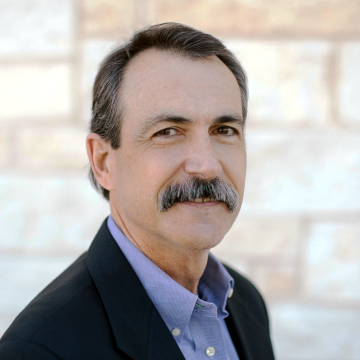CONTACT:


Social Security Bridge Strategy

A Social Security Bridge Strategy Advisors Overlook
By John Manganaro
The following is an excerpt of an article published on www.thinkadvisor.com. Please note: This is not legal or financial advice. Client should consult an attorney and/or financial advisor for their specific situation.
WHAT YOU NEED TO KNOW
Waiting to claim Social Security until age 70 can substantially increase lifetime benefits, but delaying payments can be challenging.
Social Security ‘bridge strategies’ help retirees source adequate income while they wait for full claiming age.
One expert says advisors and their clients may want to consider the use of reverse mortgages as a core component of a bridge strategy and to help address sequence of returns risk.
During a recent discussion with ThinkAdvisor, Christian Mills, head of financial advisor relations with Reverse Mortgage Funding, noted how excited many Americans are in anticipation of next year’s 8.7% cost-of-living adjustment
for Social Security benefits.
The adjustment will increase the average monthly payment by more than $140 starting in January 2023, Mills says, marking the largest jump Social Security checks have seen in 40 years. Mills says the development is welcome news to retirees who have been grappling with near-record inflation and some of the rockiest equity and bond markets seen in many decades.
Reflecting on his ongoing discussions with retirement-focused financial advisors, Mills says the Social Security COLA, the current pace of inflation and the reemergence of severe sequence of returns risk are taking up much of the oxygen in the room. The other big topic he hears about these days is the creation of “bridging strategies” that can help retirees who leave the workforce at 62 or 65 wait until the full Social Security claiming age of 70 to begin drawing income from the federal program.
As Mills notes, there is always significant nuance in financial planning, but the vast majority of retirement-focused advisors believe firmly in the wisdom of delaying Social Security payments as long as possible. The commonly cited rule is that each year of delay will deliver approximately 8% greater monthly payments in the future. This increase is often billed, Mills says, as free excess return, and that’s a pretty good way to think about it, in his estimation.
Where there is markedly less agreement is on the best ways to help clients actually accomplish this goal. Mills says the question of how to source and organize such “bridge” income from the retirement age to the full claiming age will always hinge on the facts and circumstances confronting a given client.
Some lucky clients with a high enough net worth many simply have enough cash on hand to build that bridge. Others may be able to rely on private pension payments, or on systematic withdrawals from a defined contribution-style retirement plan, such as a 401(k). In certain other cases, the purchase of private annuities can make sense as part of a bridging strategy.
These are all viable approaches that deserve consideration, Mills says, but he says more advisors should also consider what he sees as a unjustly overlooked opportunity: the use of reverse mortgages as a Social Security bridge solution.
According to Mills, it is important for retirement-focused advisors to understand that the vast majority of Americans who choose to utilize reverse mortgages are actually in the mass affluent or high-net-worth segments of the population. These Americans tend to own significant housing wealth, Mills explains, and so it is only natural that they would be the ones to seek out opportunities to leverage that equity in pursuit of their broader financial goals.
“For example, we often see the use of reverse mortgage home equity proceeds going to help grandchildren buy a first house, or perhaps to help grandkids settle their college tuition or student loan debt,” Mills says. “Many people with substantial means use reverse mortgages to start passing on their wealth while they are still alive and can enjoy the process.”
Reverse mortgages, at least in Mills experience collaborating with financial advisors, are not commonly being used as last-resort strategies among the most cash-strapped retirees who have no other income sources apart from their home. More often, a reverse mortgage is used as part of a carefully crafted financial plan, developed in collaboration with a certified financial planer or fiduciary advisor, to help mass affluent individuals achieve more lofty financial goals.
One of these goals, Mills says, is bridging from a retirement at age 62 or 65 to the full Social Security retirement age of 70. Many mass affluent individuals, he explains, will be able to meet their early retirement living expenses by coupling withdrawals from private savings, workplace DC retirement plans and payments coming from a reverse mortgage.
“There is just a ton of wealth locked away today in home equity among the mass affluent,” Mills says. “Many people in this client segment bought houses 15 or 20 years ago for, say, $250,000, and they have since seen the value of their home climb by two or three times. That’s a huge asset, and it’s worth asking how you can tap into it without an outright sale of the house.”
Mills says there are certain regions in the U.S. where this strategy is particularly relevant, given what has happened in those housing markets over the past decade or two.
“Based on my experience, this strategy is most commonly utilized in those areas that have high-value homes concentrated within or near major metro areas, so think places like Baltimore, Chicago, Denver and pretty much any city in California,” Mills says.
Mills says financial planners are warming to the concept of at least considering the use of reverse mortgages as part of their holistic planning efforts for clients. Gone, he says, are the days when reverse mortgages were seen as “an opportunity for the bank to steal grandma’s house.”
“I like to say that advisors should think about a firm like ours as a third-party partner, the same way they might view working with a tax expert or an estate planning attorney,” Mills says.
Given the current market volatility, Mills says, more advisors are also asking about the opportunity to use reverse mortgages as a means of mitigating sequence of returns risk.
“It is really appealing to think about taking income from your home equity rather than having to make withdrawals from the 401(k) plan when it is down 25%,” Mills concludes.
John Manganaro
Contact us today for your no obligation reverse mortgage loan evaluation.






This material is not provided by, nor was it approved by the Department of Housing & Urban Development (HUD) or by the Federal Housing Administration (FHA). It is not intended to be a substitute for legal, tax or financial advice. Consult with a qualified attorney, accountant or financial advisor for additional legal or tax advice.
*There are some circumstances that will cause the loan to mature and the balance to become due and payable. The borrower(s) must continue to pay for property taxes and insurance and maintain the property to meet HUD standards or risk default. Credit is subject to age, minimum income guidelines, credit history, and property qualifications. Program rates, fees, terms and conditions are not available in all states and subject to change.
Kenny Hawthorne |
NMLS #1647665
Ken Kennedy |
NMLS #1627908
Retirement Mortgage Specialists
605 S Orchid
White Oak, TX 75693
Phone: 903-235-7114
C2 Financial, NMLS #135622
This licensee is performing acts for which a mortgage company license is required. C2 Financial Corporation is licensed by the Texas Department of Savings and Mortgage Lending, NMLS # 135622. Loan approval is not guaranteed and is subject to lender review of information. All loan approvals are conditional and all conditions must be met by borrower. Loan is only approved when lender has issued approval in writing and is subject to the Lender conditions. Specified rates may not be available for all borrowers. Rate subject to change with market conditions. C2 Financial Corporation is an Equal Opportunity Mortgage Broker/Lender. The services referred to herein are not available to persons located outside the state of Texas.
Corporate Address: 10509 Vista Sorrento Pkwy #400 San Diego, CA 92121 Texas
Complaint/Recovery Fund Notice: (https://www.sml.texas.gov/wp-content/uploads/2021/07/rmlo_80_200_b_recovery_fund_notice.pdf)
Tyler, Longview, East Texas, Texas
© 2023. All rights reserved.
